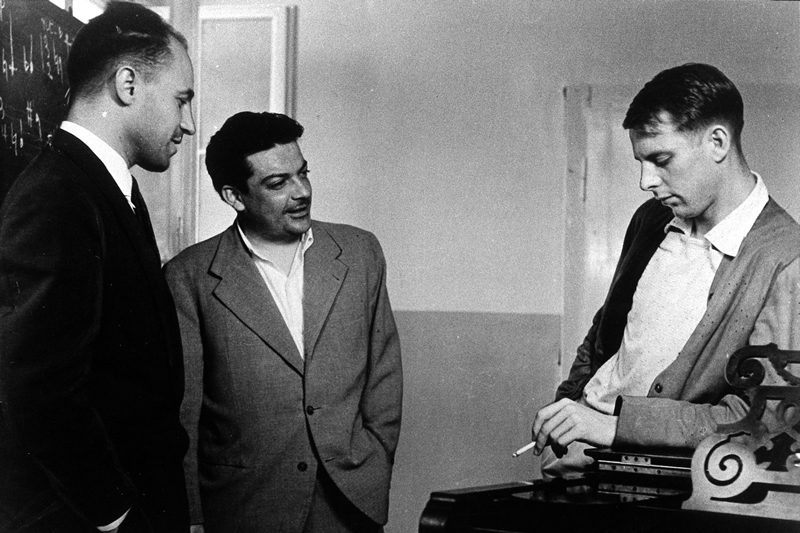
Instrumentation Works for Orchestra
Stockhausen Complete Edition on CD
Since 1991, a complete edition of all recordings in which Karlheinz Stockhausen has personally participated is being released on compact discs. Each CD in this series is identified by Stockhausen's signature followed by an encircled number. The numbers indicate the general historical order of the works.
Stockhausen realised the electronic music and participated in these recordings as conductor, performer, sound projectionist, and musical director. He personally mixed down the recordings, mastered them for CDs, wrote the texts and drew the covers.
- The compact discs may be obtained from the Stockhausen-Verlag: Kettenberg 15, 51515 Kuerten, Germany (www.stockhausenCDs.com).
Karlheinz Stockhausen
Instrumentation Works for Orchestra
MIXTUR
MIXTUR for orchestra, sine-wave generators and ring-modulators
| SCH = PERCUSSION |
| H = WOODWIND |
| B = BRASS |
| P = PIZZICATO (one half of the strings, harps(s), other plucked instruments) |
| S = STRINGS (the other half of the strings) |
| The number of the instruments in each of the groups H B P and S is to be determined by the conductor. |
| There is only one part for each group of instruments. All parts have the some page numbers as in the score. |
| 2 players read from 1 part and have 2 stands. |
The following average instrumentation is recommended:
| SCH | 3 percussionists: each 1 cymbal
 1 tam-tam
  |
each is hung with several leather straps; For each  and each and each  1 contact microphone is fastened onto the leather straps. 1 contact microphone is fastened onto the leather straps. |
| H | 3 flutes (all also piccolo) | |
| 3 oboes | ||
| 3 clarinets (1 also piccolo clarinet, 1 also bass clarinet) |
||
| 3 bassoons (1 also contrabassoon) | ||
| B | 3 trumpets | each trumpet and trombone requires 3 mutes: straight, cup, wawa. |
| 3 trombones (3rd. with thumb valve) | ||
| 3 high horns | the horns require mutes. | |
| 2 low horns | ||
| 1 tuba | ||
| P | 6 violins I | |
| 6 violins II | ||
| 5 violas | ||
| 4 violoncelli | ||
| 3 double basses | ||
| 1 or 2 harps | harps (and any other plucked instruments) use the P-part and choose - after consulting the conductor - what they play. | |
| S | 6 violins I | |
| 6 violins II | ||
| 5 violas | ||
| 4 violoncelli | ||
| 3 double basses |
If fewer instruments are used, the parts in the moments with specified instrumentation can be distributed among the instruments available (if necessary even exchanged between the groups of instruments).
If the orchestra is larger, the increase should be proportionally equal for the groups H B P S.
The parts include transpositions for piccolos,  clarinets,
clarinets,  clarinet,
clarinet,  bass clarinet, contrabassoon, F horns, double basses.
bass clarinet, contrabassoon, F horns, double basses.
If further transposing instruments are used in addition (cor anglais, saxophones, guitar etc.) the corresponding transpositions must be added in the material.
Where only the word SOLO is given in the score the conductor must determine which instrument is to play (choosing different instruments for different versions).
The contact microphones of the 3 percussionists are to be connected to 3 loudspeakers (c.f. position in the plan).
Each of the groups H B P S should be concentrated as much as possible and sit separated from each other in the hall. Microphones with high directional sensitivity hang above each group. When possible single "solo"-players in each group and the first desks in P and S should also have individual microphones.
The 4 microphone groups are to be connected to 4 ring-modulators (if possible use special modulators, which give only the simple sum and difference frequencies).